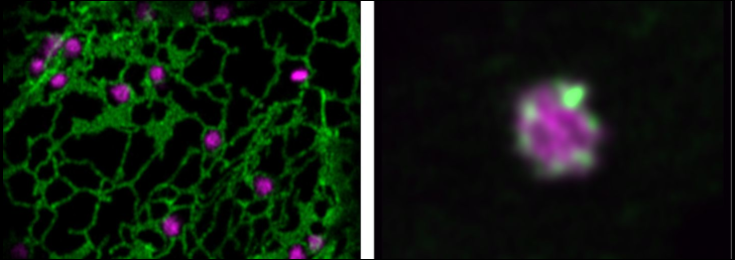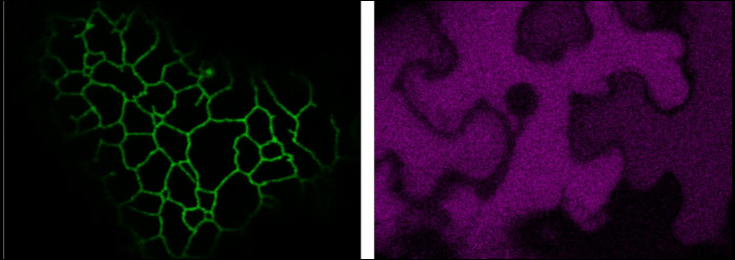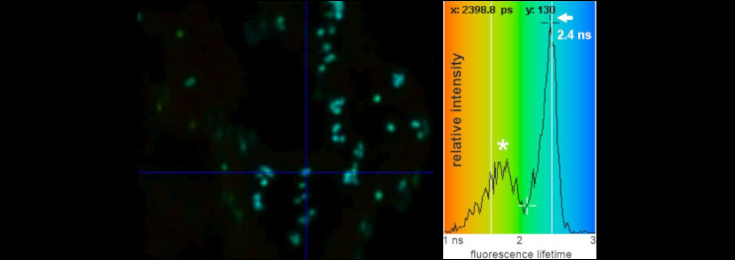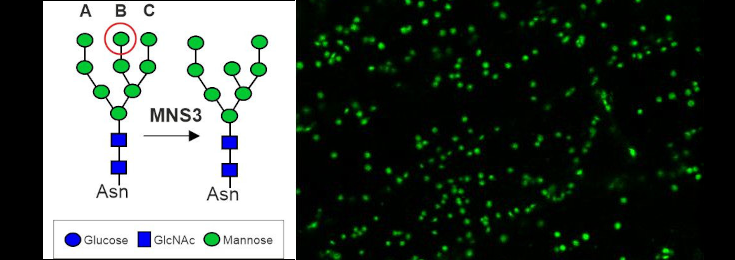Jennifer Schoberer
Glyco-Cell Biology
Overview
Overview
Protein localisation signals and mechanisms in plant cells, intracellular transport of glycosylation enzymes and secretory proteins, structure-function of the plant Golgi apparatus, high-resolution optical imaging of live cells
Leader: Ass.Prof. Mag. Dr. Jennifer Schoberer
Research Interests
- Subcellular trafficking of secretory proteins in plant cells
- Subcellular trafficking, dynamics and interactions of plant glycosylation enzymes in the endoplasmic reticulum and Golgi apparatus
- Cell biology of the plant Golgi apparatus
- Development of new approaches to control and modify the glycans on recombinant proteins
- Development of new advanced imaging technologies required for protein traffic research
Orientation
Research in our group concentrates on getting a better understanding of the plant secretory pathway, which serves as a production platform for proteins and polysaccharides. The overall goal is to understand the fundamental cell biology of the Golgi apparatus, which is a central biosynthetic organelle of the secretory pathway in all eukaryotes. Our aims are:
(1) the elucidation the organisation of biosynthetic enzymes involved in N-glycan processing or polysaccharide assembly in the Golgi stack,
(2) the identification of the signals and underlying mechanisms responsible for organising these enzymes, and
(3) application of this knowledge to modulate N-glycan profiles of glycoproteins or cell wall composition for various biotechnological applications.
To address these goals, we utilise the model plants Nicotiana benthamiana and Arabidopsis thaliana, along with techniques such as live cell imaging, biochemistry, mass spectrometry, electron microscopy, and analysis of Arabidopsis mutant plants, to study the subcellular localisation, transport, and interaction of proteins in real-time in living cells.
molecular biology
confocal microscopy and live-cell imaging

affinity-purification mass spectrometry

transmission electron microscopy

protein-protein interaction studies

Arabidopsis reverse genetic analysis

glycan analysis

RNAseq (volcano plot)

Projects
Current Project (FWF PAT1605724)
Characterisation of the Arabidopsis Xylan Synthase Complex
The hemicellulose xylan is present in both primary and secondary cell walls, and is the main non-cellulosic polysaccharide found in industrially important biomass, such as wood and grasses. Despite its central role in plant development, growth, cell wall strength, and biomass recalcitrance, little is known about the organisation and distribution of xylan biosynthetic proteins within the Golgi apparatus, or how these factors affect xylan biosynthesis and cell wall formation. Our aim is to uncover the mechanisms behind the formation and localisation of the xylan synthase complex in the model plants Arabidopsis and Nicotiana, and to assess the effect of these factors on xylan production and cell wall composition in mutant plants. Ultimately, our goal is to identify the key factors that enable modification of xylan biosynthesis and cell wall structure.

(A) The unsubstituted xylan backbone structure consists of a linear polymer of β-(1,4)-linked xylose residues and is generated by the xylan synthase complex composed of IRX9, IRX10 and IRX14. (B) Localisation of GFP-tagged Arabidopsis IRX14 (in green) in Golgi stacks of Arabidopsis roots. Protoxylem vessel cells (in magenta) were highlighted with the fluorescent dye propidium iodide.
Publications
Funding Agencies
Collaborations
- Dr. Verena Kriechbaumer, Oxford Brookes University, Oxford, UK
- Prof. Stan Botchway, STFC, Central Laser Facility, Harwell-Oxford, UK







